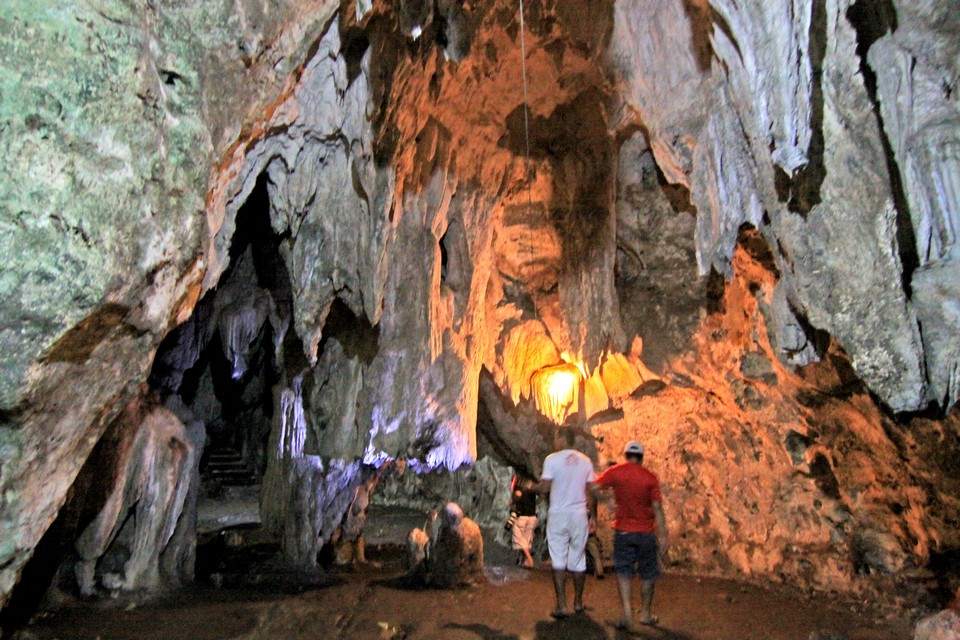Filtered by: Lifestyle
Lifestyle
Inside Bicol's Hoyop-Hoyopan Cave, the wind blows free
TEXT AND PHOTOS BY DANNY PATA
With the rising temperatures these days, enjoying the summer outdoors is a challenge. For those who dread the heat, caving is a sure way to have fun and burn calories without toasting your skin.
Because of its natural ventilation, Hoyop-Hoyopan Cave in Bicol is one ideal summer getaway for adventurers and tourists.

Tourists are expected to observe the rules inside the cave to maintain its natural form and avoid untoward accidents.
Sun-kissed travelers can enjoy the cool, fresh air inside the cave, which was named for the wind that passes freely through the different openings in the cave. “Hoyop” in Bicolano means "blowing of air or wind."
One of the cave's openings is a grand window, through which travelers can enjoy a splendid view of Mayon Volcano.
The numerous entrances and exits vary from two to 10 meters in diameter. These passageways will test your skill in squeezing, crawling, and kneeling to get through in order to reach the different chambers, including a mini-pond and a dance floor.
Inside the cave are wonderful formations of stalagmites and stalactites, as well as hidden sacred knowledge of the life of our ancestors — the early inhabitants of the area.
The late Fr. Cantius Kobak, OFM, a Franciscan priest and archaeologist, classified the cave as old as 3000 B.C to 4000 B.C. Meanwhile, jars found inside the cave were dated from 200 B.C. to 900 A.D., and attributed to Calanay complex.

The artifacts are now housed at the National Museum in Manila, while some are displayed at nearby Camalig Church.
During the Japanese occupation, Hoyop-Hoyopan cave served as a guerilla and refugee camp. Apart from serving as a sanctuary of our country’s liberation army, the cave was also used as a hospital and orphanage.
According to stories from the townsfolk, it took three years before the enemies discovered the Hukbo ng Bayan Laban sa Hapon (Hukbalahap) camp.
During the Martial law era when curfew was strictly imposed, this cave served as a safe haven for partygoers. Time has proven the cave’s worth — Camalig villagers continue to seek refuge and shelter from Hoyop-Hoyopan cave every time a ravishing typhoon strikes in the area.

During the Martial law period, this area served as a dance floor for partygoers, overnight celebrations of barrio fiesta and other community gatherings.
Today, the Hoyop-Hoyopan cave, which covers approximately 31.4 square meters of land area, is privately maintained by the Soriano, Nieva, and Nuylan families.
Some structures were built inside the cave for the safety of the tourists, according to Jed Villanueva, Municipal Tourism and Cultural Officer of Camalig, Albay.
There is a staircase for easy access to the other level of the cave. An incandescent bulb lights pathways to allow tourists to fully appreciate the rock formations inside the cave. Still, local officials in Camalig advise the cave's caretakers to use battery-operated flashlights instead of an electronic bulb.
A local tour guide, who is well versed in the cave’s history and its trail, can be hired for P100 to P200.
Located in Cotmon Village, Camalig, Albay, the cave is about 16 kilometers from Cagsawa Ruins, and can be reached in about 20 to 30 minutes from the town proper.
The entrance fee is P200, for two to three persons, while the parking fee is P25. Public transportation to the cave is also available. —CGL/KG, GMA News
More Videos
Most Popular




